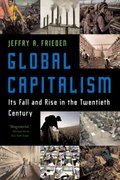The one i struggled to understand is the part b) why is the formula like that and e) does it mean by the REAL wage are the same?
Q19. Farmers & barbers. The real wage earned by any worker is determined by that worker's marginal productivity. Let's use this insight to examine the incomes of two groups of workers: farmers and barbers. (a) Over the past century, the productivity of farmers has risen substantially because of technological progress. According to the neoclassical theory, what should have happened to their real wage? According to the neoclassical theory, technical progress that increases the marginal product of farmers causes their real wage to rise. (b) In what units is the real wage discussed in part (a) measured? (6] The real wage for farmers is measured as units of farm output per worker. The real wage is W/PF, and this is equal to ($/worker) / ($/unit of farm output). Over the same period, the productivity of barbers has remained constant. What should have happened to their real wage? If the marginal productivity of barbers is unchanged, then their real wage is unchanged. (d) In what units is the real wage in part (c) measured? (9] (fl (3] The real wage for barbers is measured as haircuts per worker. The real wage is W/PE, and this is equalto ($/worker) / ($/haircut). Suppose workers can move freely between being farmers and being barbers. What does this mobility imply for the wages of farmers and barbers? If workers can move freely between being farmers and being barbers, then they must be paid the same wage W in each sector. What do your previous answers imply for the price of haircuts relative to the price of food? If the nominal wage W is the same in both sectors, but the real wage in terms of farm goods is greater than the real wage in terms of haircuts, then the price of haircuts must have risen relative to the price of farm goods. We know that W/P = MPL so that W = P x MPL. This means that PFMPLF = PEMPLB, given that the nominal wages are the same. Since the marginal product oflabour for barbers has not changed and the marginal product oflabour for farmers has risen, the price of a haircut must have risen relative to the price of the farm output. If we put it in growth-rate terms, then the growth of the farm price + the growth of the marginal product of the farm labour = the growth ofthe haircut price. Who benets from technological progress in farmingfarmers or barbers? Both groups benefit from technological progress in farming







